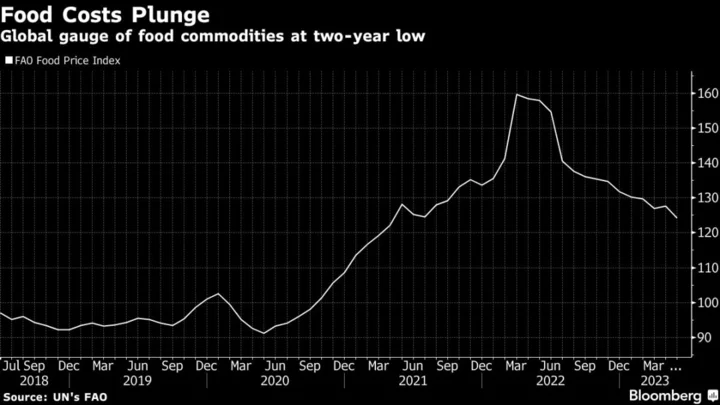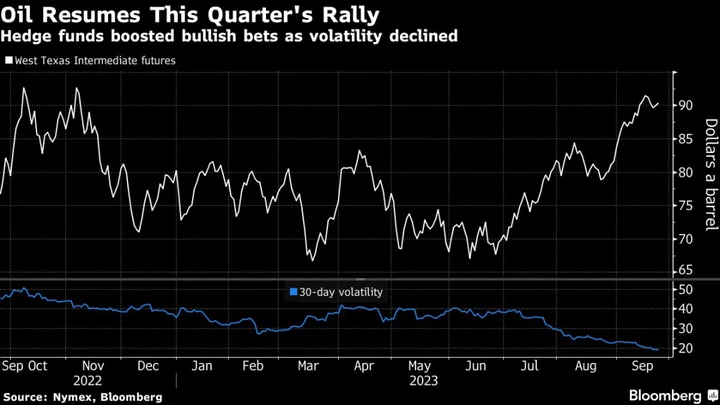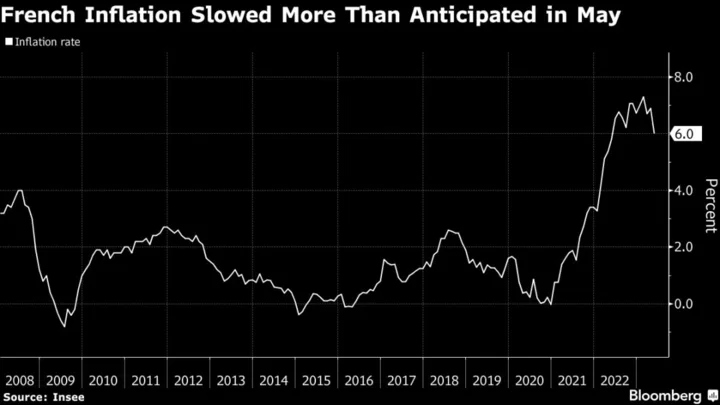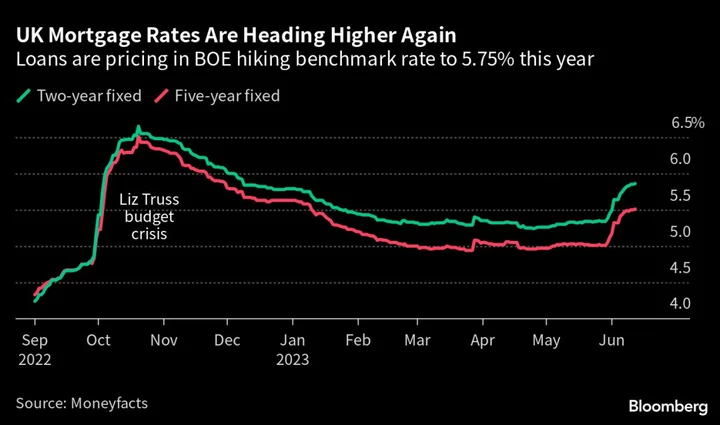Global food costs fell to the lowest level in two years in May, reviving hopes that sticky inflation on supermarket shelves will start to ease.
A United Nations’ index of food-commodity prices fell 2.6% in May, as declines in grains, vegetable oil and dairy offset higher sugar and meat costs. The gauge of prices for internationally-traded agricultural commodities has fallen 22% from the peak it reached in March last year following Russia’s invasion of Ukraine.
Wheat prices are trading near the lowest in more than two years as bumper supplies from Russia weigh on the market, and European crops are in good condition. Still, declining commodities prices are taking time to feed through to consumers, with transportation, labor and energy costs remaining high.
While the UN food index has fallen for 13 of the past 14 months, that’s had little impact on consumers, reflecting how prices of everyday items are at the mercy of broader economic drivers. High consumer food prices are also in some cases, very local and specific to individual countries, according to Joseph Glauber, a senior fellow at the International Food Policy Research Institute.
“It’s really the macro-economy that is driving the food prices,” Glauber said. “We see a number of macroeconomic factors including exchange rates, including energy prices, including wage price inflation and that sort of thing. That affects food prices at the end of the day.”
(Updates with IFPRI comment from fifth paragraph.)
Author: Agnieszka de Sousa and Áine Quinn









